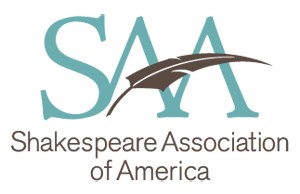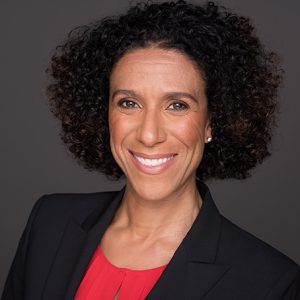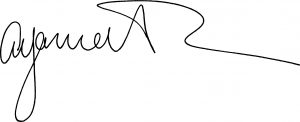Letter from President Ayanna Thompson, 1 January 2019
This year’s conference will mark my eighteenth in attendance. While this is a small amount when compared to our colleagues who have been coming since our organization’s inception in 1972, the changes I have seen are still mind boggling. In the first seminar I attended (on Titus Andronicus led by Heather James with Katherine Rowe as a respondent), we received giant packets in the mail of printed hard copies of the essays. Although PowerPoint existed, it was not widely available and renting projectors and screens at conference hotels was prohibitively expensive (okay, that hasn’t really changed much!). Therefore all visual aids were printed on paper and handed out in person. There were 430 participants in that conference in Miami with 34 seminars. As a graduate student, I thought it was an impossible task to get to know any of those scholars but looking back I see how manageable it was. If you went to dinner with a group of 20, you were actually meeting five percent of the membership. I won’t bore you by listing all the changes now, but it is important to stress that in contrast this year’s conference in Washington, D.C. will have over 1,200 participants and 70 seminars. You’d need to have a dinner party of 60 people to meet five percent of the membership. That’s a lot of change and growth.
There are many factors in the SAA’s growth. Some have to do with the changing nature of the profession: we have grown as other prominent organizations/conferences shrink. Some have to do with our organization’s continuous striving to be more inclusive both in terms of our membership—graduate students, contingent faculty, independent scholars, scholars of color, etc.—and in terms of the scholarship supported—historicist, archival, theoretical, performance-based, quantitative, etc. “Shakespeare” is capacious in the popular imagination, and the SAA has worked hard over its 46 years to ensure that our professional organization matches that capaciousness.
The board of trustees has been thinking about ways that the governance of the SAA might evolve to handle our organization’s growth. These structural changes range from things that will be invisible to most members (e.g., hiring an accounting firm) to ones that may become more visible (e.g., potentially increasing the size of the board). We are mindful that for many SAA is their only professional conference for the year (due to teaching loads and schedules, financial costs, personal/familial obligations, etc.), and we want to ensure that the benefits of attending continue to outweigh the costs. We are also mindful that for many SAA seems to be run like a black box without enough transparency, and we want any governance/structural changes to help foster greater transparency. As we continue to grow and evolve, I hope you will share your ideas for the organization with the board of trustees and our new executive director, Karen Raber. SAA, after all, exists for you, its members!
So what are my dreams for SAA in the next eighteen years, for SAA 2037? First, I hope it will be in Miami again! What rewards serious scholarship more than a beautiful beach with mint-based drinks? Second, I hope the average member will be able to articulate exactly how the organization is structured, organized, and operated, why it functions that way, and how to go about making suggestions and changes. Transparency goes a long way towards fostering buyin, and I sincerely hope the SAA continues to inspire its members’ buy-in. While I do not necessarily believe that bigger is always better, I hope SAA continues to be the place where our individual and collective thinking is challenged and expanded the most. One potential danger of getting bigger is for the organization to be run in a top-down, bureaucratic fashion. But I am optimistic that the recently formed affinity groups and initiatives on social media continue to produce change both within our scholarship and within our organization.
Eighteen years ago when I attended my first SAA conference, it was inconceivable that I would be the president of this professional organization. After all, I am black woman who works in early modern race studies, and Shakespeare and race were rarely voiced in the same sentence back then. As it turns out, both Shakespeare and SAA are more capacious and robust than I imagined. Help us to foster that capaciousness to guide SAA into even more expansive directions.
Sincerely,
Ayanna Thompson
2018-2019 President




